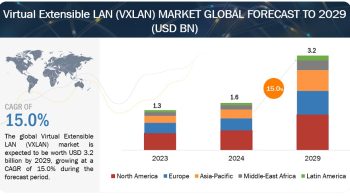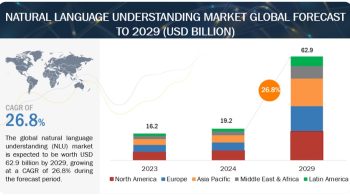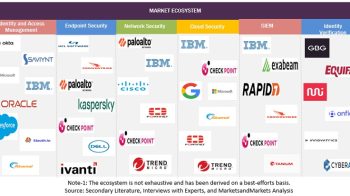INTRODUCTION
Today video streaming is growing due to its positive impact on multiple industries like the entertainment and corporate world. The convenience provided by video streaming, in addition to technological advancements, has driven the exponential growth of the video streaming software market. Today, video streaming is used to conduct business meetings over Zoom, secure premises through real-time monitoring, and consume video content through online streaming platforms. Furthermore, it has become one of the most effective ways of communicating with customers through live-streaming marketing. For instance, Amazon Inspire creates shoppable feeds from influencers’ photos and video content where viewers can buy the product an influencer is wearing with the touch of a button.
Download PDF Brochure: https://www.marketsandmarkets.com/pdfdownloadNew.asp?id=181135120
Medical practitioners currently use live streaming technology in the healthcare sector to hold online training sessions and care for patients in real time. Similarly, educational institutions have been using video streaming to deliver lessons to students online. Live streaming platforms such as Vimeo, Twitter, and Facebook offer businesses innovative ways to deliver content. Vimeo had over 170 million active users and approximately 1.7 million paying subscribers in 2022. Organizations are also using live video streaming to help customers troubleshoot product and service issues. Video streaming’s interactive nature contributes to customer experience, which is now considered a critical element of customer service.
Additionally, the gaming industry is using video streaming to reach a wider audience. In January 2022, Twitch had 91 thousand streams and 2.5 million viewers on the platform. Moreover, Twitch is the largest platform for live gaming, followed by Facebook Gaming and YouTube Gaming.
EMERGING TRENDS
Since the COVID-19 pandemic forced people to stay at home and drastically cut down their daily activities, as the entire world was brought to a standstill by the COVID-19 outbreak, media consumption in numerous countries saw an upsurge. The pandemic has had significant effects on how households consume streaming media. With over 4.5 billion people using the internet in early 2020, streaming services usage has grown considerably globally. As per a study by Wyzowl in 2021, 96% of consumers report that their video consumption has dramatically increased due to the pandemic. For instance, in 2021, YouTube had more than 2 billion logged-in visitors every month. Also, visitors watch more than 1 billion hours of video and generate billions of views every day. With over 1 billion users, YouTube is the largest video streaming platform in the world. The user base is almost a third of worldwide internet users.
The emergence of video streaming platforms has accelerated adoption rates in video streaming. The Over-The-Tope (OTT) platforms such as Netflix, Hulu, Amazon Prime Video, Disney+, and HBO are growing in popularity due to access to unlimited high-quality content. For instance, Netflix’s revenues surged from USD 20.1 billion in 2019 to just about USD 25 billion in 2020, with its paid subscriber base reaching 204 million. As of 2022, Amazon reported over 200 million Amazon Prime customers worldwide.
Request Sample Pages: https://www.marketsandmarkets.com/requestsampleNew.asp?id=181135120
Another notable trend that is boosting the adoption of streaming is the rise in the use of mobile devices, which was gaining momentum even before the pandemic. The proliferation of mobile devices is accelerating technological evolution around the world. Smartphones are now abundantly available, providing great potential for the growth of the video streaming software market. Also, despite their small screens, smartphones are powerful when it comes to grabbing the attention of the viewer. As per statistics from YouTube, more than 70% of the platform’s watch time comes from mobile devices.
MARKET INSIGHTS
As per MarketsandMarkets (MnM) analysis, the global video streaming software market is estimated to have a market value of USD 7.5 billion in 2021 and is projected to reach a market value of USD 17.5 billion by 2026 growing with a CAGR of 18.5% during the forecast period. According to Statista, the video-on-demand (VoD) revenue reached an estimated 86 billion USD in 2021, with the US accounting for the largest share of revenue worldwide. More than 45% of households in the US have access to streaming VoD services. Key factors that drive the market’s growth include increasing penetration of mobile devices, growing demand for VoD streaming, technological advancements in the digital media industry, and the growing need for transcoding to deliver videos to maximum users.
VENDOR INSIGHTS
The major players in the video streaming software market include IBM, Kaltura, Brightcove, Panopto, Haivision, Vimeo, Vbrick, Poly (formerly Polycom), Qumu (subsidiary of Enghouse Systems), and Sonic Foundry. Countries in North America, including the US and Canada, have shown faster and broader adoption of upcoming technologies. These players have adopted organic and inorganic growth strategies to expand their global presence and increase their market share in the video streaming industry.
The vast opportunities in the market attract many global investments from large organizations. Prominent vendors are entering the Video Streaming Software market through mergers and acquisitions. While companies such as Qumu, Sonic Foundry, Haivision, Kaltura, and IBM invest more in R&D activities to develop new products or enhance their offerings. Furthermore, numerous start-ups are aiming to enter the video streaming marketspace to tap into lucrative opportunities.
Get More Info About Video Streaming Software Market @ https://www.marketsandmarkets.com/Market-Reports/video-streaming-market-181135120.html
STRATEGIC ALLIANCES
- In February 2023, Qumu was successfully acquired by Enghouse Systems. Qumu’s Video Engagement Platform would further expand Enghouse’s enterprise video suite of products, which includes Enghouse Vidyo products.
- In December 2022, Vbrick acquired Ramp, an enterprise content delivery network (eCDN) provider. The combined power of Ramp and Vbrick’s eCDN technologies create a complete solution for delivering flawless live and on-demand video.
- In August 2022, HP acquired Poly, a leading provider of workplace collaboration solutions. The merger would allow HP to offer hybrid work solutions and strengthen its position in the market.
- In April 2022, Haivision acquired Aviwest, a leading global provider of IP-based mobile video contribution systems. The acquisition would help Haivision to offer customers a comprehensive video contribution solutions portfolio which includes 5G mobile technology and network bonding.


